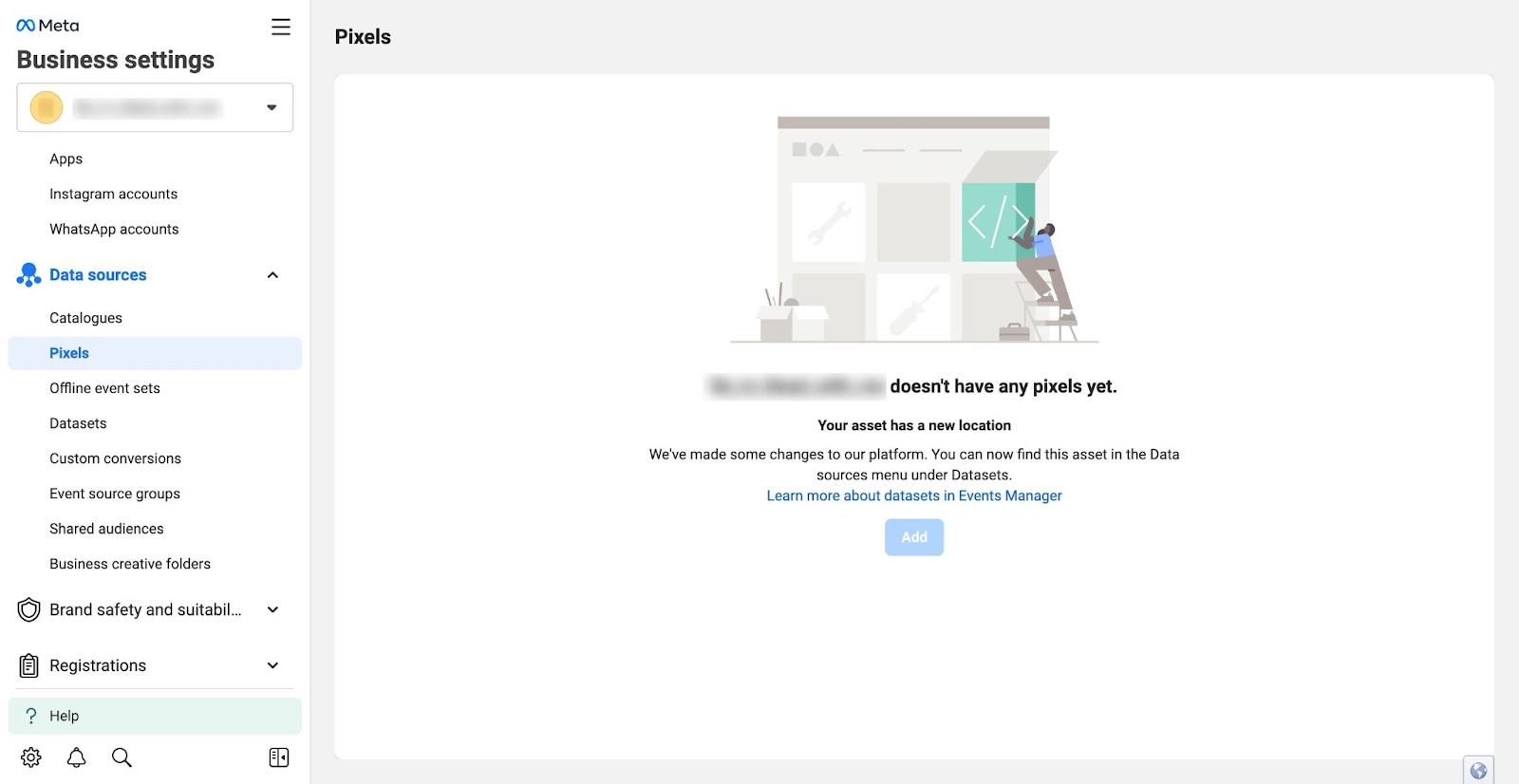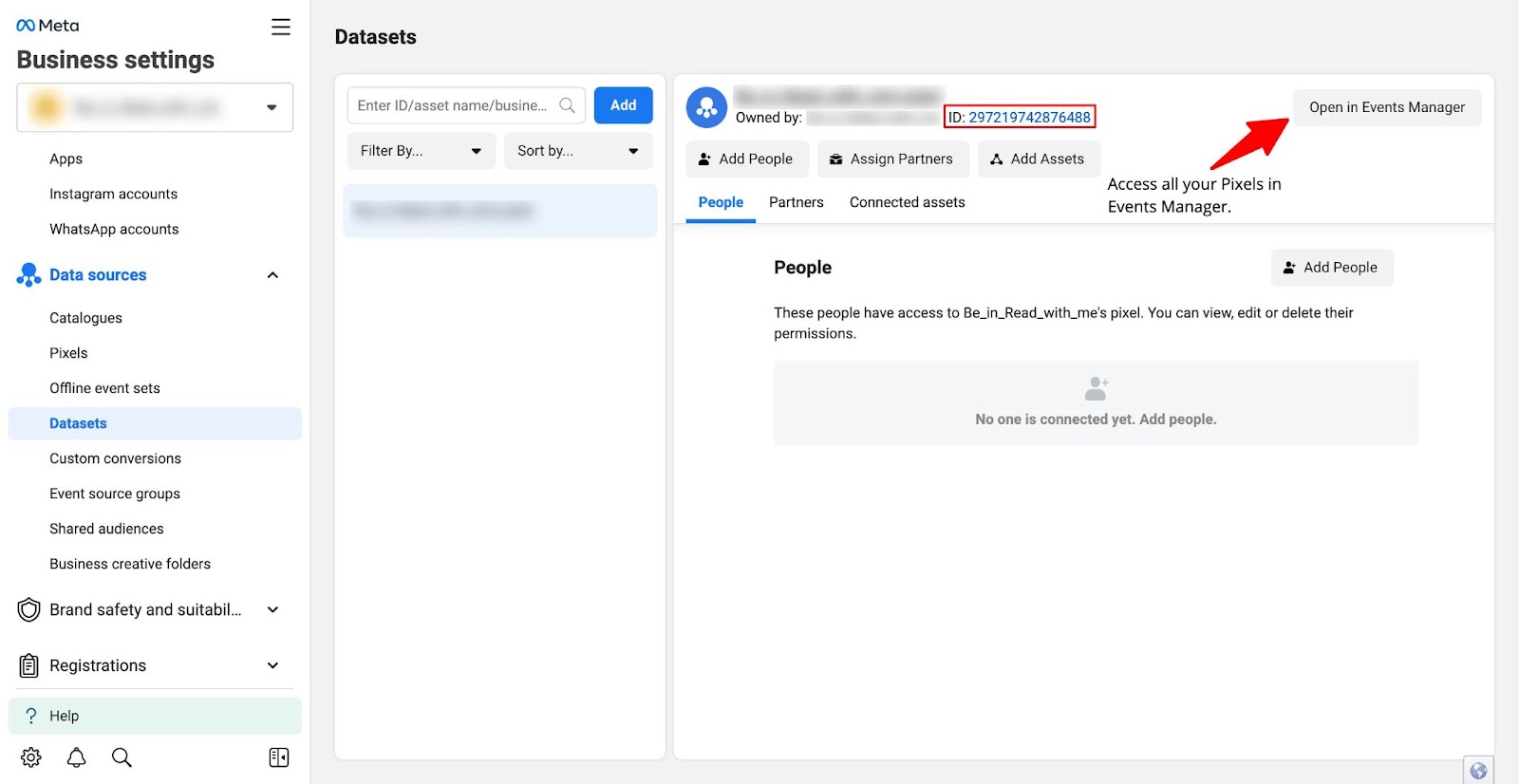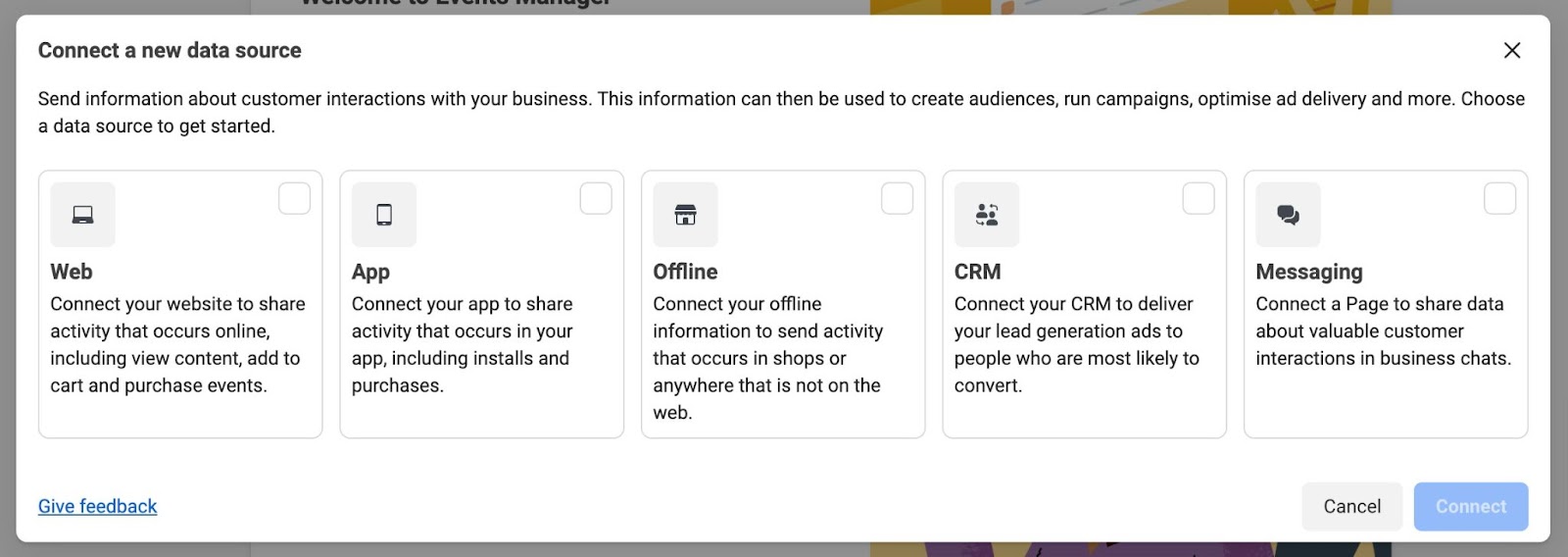You opened your Business Manager account and found all your Pixels have disappeared. If you’re wondering what happened — keep reading.
Recently, Meta made some changes in the way you manage events in your Ads Manager. Meta introduced Datasets, which led to pixels disappearing.
But, what is this new Dataset? Have I lost all my Pixels? If I haven’t lost them, where can I find them? Will ads stop working now? Do I need to set up systems again?
I’m sure you have these and many more questions. Below, you’ll learn everything about a Meta Dataset, including what it is, how it is different and better than Pixels, and why you need it.
Let's start by answering the most pressing question.
My Meta Pixels have disappeared. Have I lost them? What should I do?

If you saw this screen when you clicked on “Pixels” on your Business Manager account, don’t worry. You haven’t lost your pixels; they’ve just been moved to the “Datasets” column.
You don’t need to do anything. All your old pixels will work as usual and now have an event ID. But you can’t install pixels anymore. You need to create datasets from now on.

So, what are these new changes about?
What is a Meta Dataset?
A Meta Dataset is sets of data that businesses can create and manage within the Meta Events Manager platform. In addition to finding and tracking Meta audiences, companies can upload their additional information to create custom audiences, optimize ad targeting, and gain insights.

Datasets are like Facebook pixels, but better:
- With pixels, you can only identify website visitors on Facebook.
- But with Datasets, you can identify and capture audiences from different sources like apps, offline events, and third-party sites.
What's the differences between Meta Pixel and Dataset?
When we already had Facebook Pixel, what was the need for Datasets? Aren’t they both the same? They might look like, but there are many differences:
1. Collection sources
2. Collected information
Also, because of aggregated event tracking, Meta pixel can only count one event even when multiple take place together. For example, if in an e-commerce store, a user checks out four different products but purchases only one, the total events will be one purchase.
You had no way of knowing what other products the user checked out, which could be crucial information for creating targeted ads for this user type. But with Datasets, each event is counted as separate. For our above example, the total number of events counted will be five: four for product checkouts and one for purchase.
3. Flexibility and customization
Let’s understand how creating custom events and defining parameters can help. Suppose you want to identify which ad is performing better. You can use datasets to create a custom event to track the ROI of your ad campaigns.
4. Domain verification
Earlier, collecting user interaction from third-party websites like Amazon was impossible. Suppose you run an Amazon shop. Since you don’t own “amazon.com,” you can’t add it as a source on Meta or run ads as you first need to verify the domain.
With Datasets, you don’t have to verify any domain. But that doesn’t mean you shouldn’t do it, as there are many other benefits like brand management and more security.
5. Event management
How are Datasets beneficial to advertisers on Meta?
The iOS 15 update limited Facebook’s ability to collect audience data, severely affecting the quality of ad campaigns for many businesses. Meta wants to fill in the missing data, and with Datasets, they not only have websites as a data source but many others for more accurate information.

How does this benefit advertisers? More accurate information collection means advertisers can:
- Get a unified view of audience behavior and activity from different sources.
- Create more comprehensive custom audiences for targeted ads based on users’ social media interaction.
- Improve measurement and optimization for social media ad campaigns with better audiences.
- Increase conversion rates and reduce ad spend, which is the dream of every Meta advertiser!
Access your client’s Meta Ad assets in 2 clicks
With all those advanced announcements and new tools, aren’t you excited to start creating Datasets and more targeted omnichannel ads for your clients? I bet you are!
But I don’t have permission to work on my client’s Meta ad assets yet. I’ve sent an email request and am still waiting for their reply.
You can avoid the back-and-forth of onboarding with Leadsie by getting access to your client’s Meta ad assets, including Datasets and pixels, in two clicks.
Simply share your Leadsie link with your client; they assign assets, and you get access. It’s as simple as that!
It’s more secure for everyone and saves a ton of time! Give it a try with our 14-day free trial…enter your email in the box below!

















%20Marketing%20Strategies.png)

